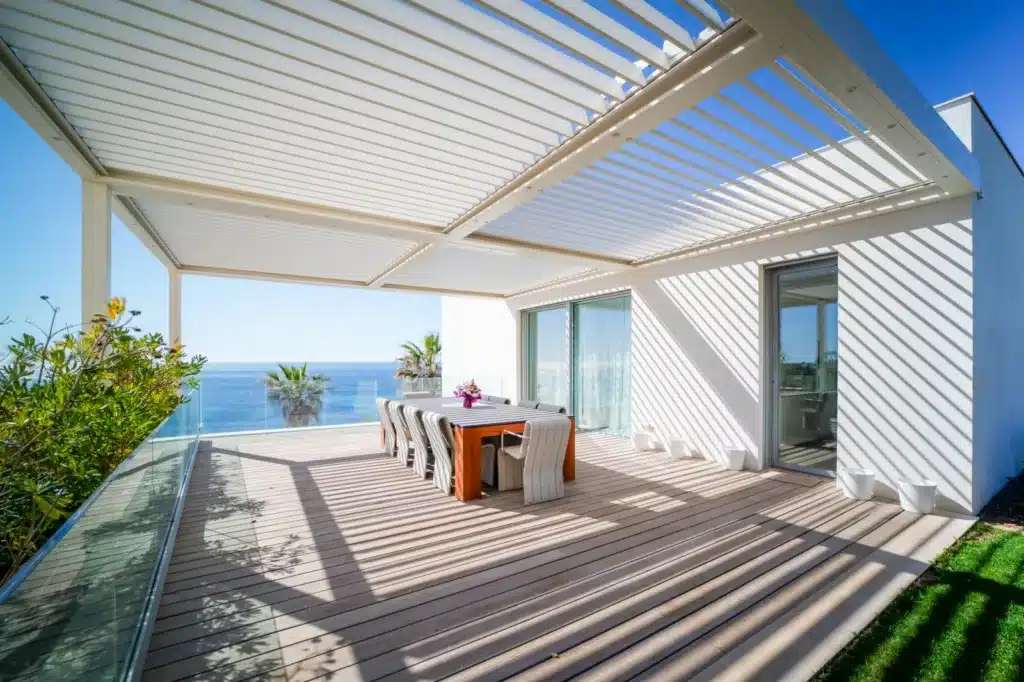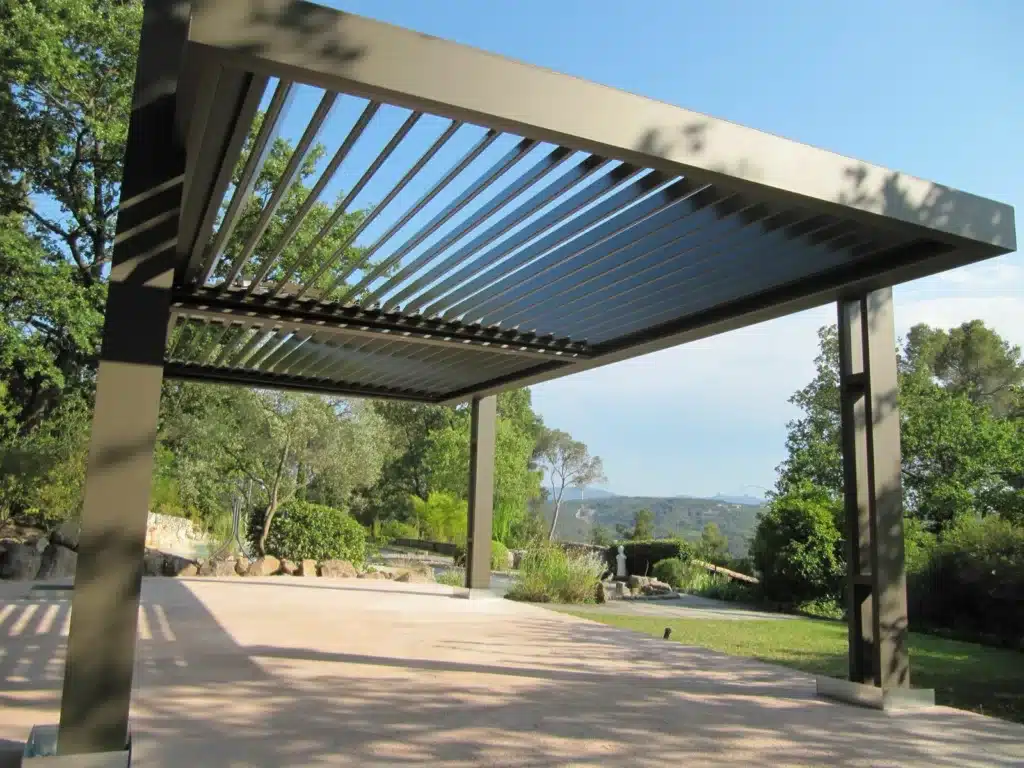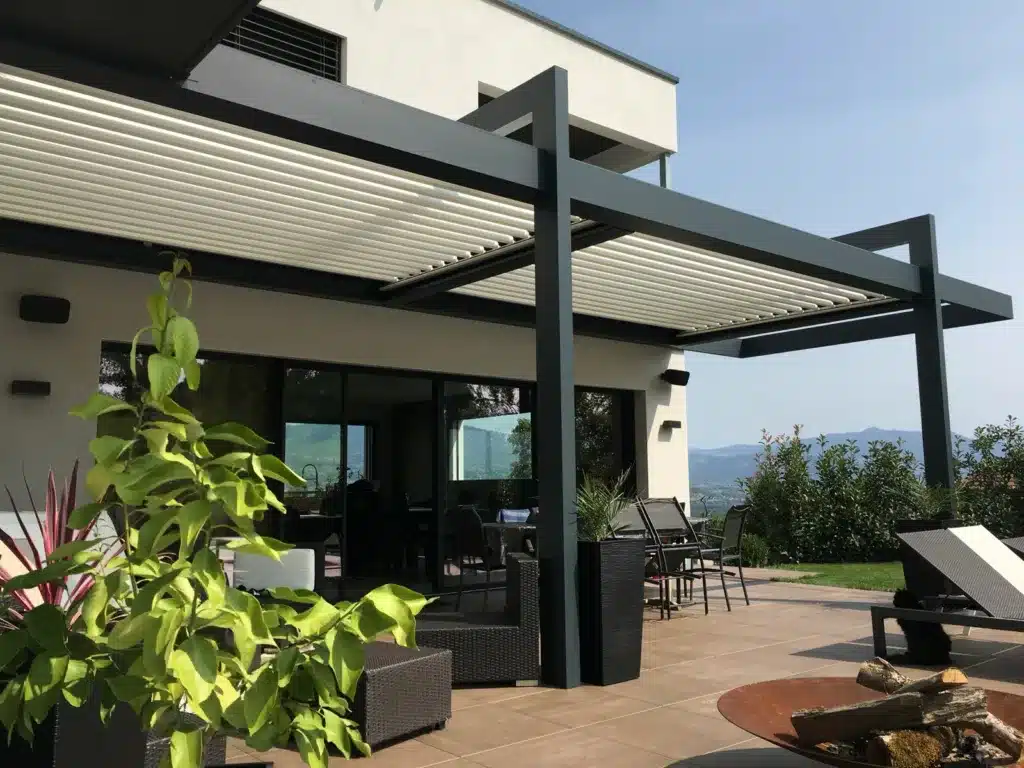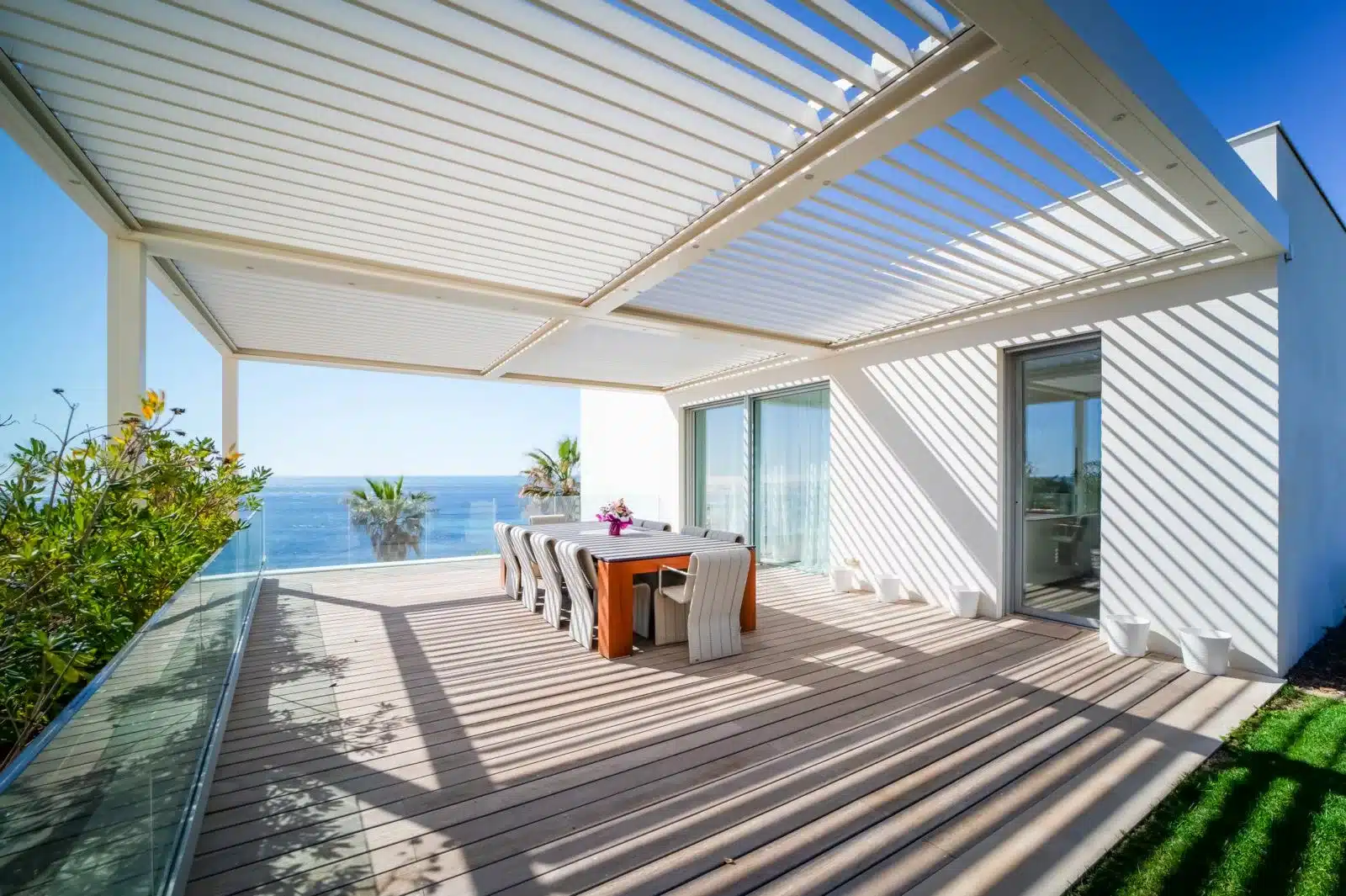Selecting the right materials is essential for creating a bioclimatic pergola that endures Portugal’s climate, especially in coastal and sunny regions. High-quality materials enhance durability, reduce maintenance, and offer better aesthetic appeal. Here’s a look at the most popular materials used in bioclimatic pergolas and their unique advantages.
1. Aluminum
Aluminum is one of the most popular materials for bioclimatic pergolas due to its durability and resistance to corrosion. Lightweight yet strong, it’s ideal for Portugal’s coastal areas, where humidity and salt can be problematic for other metals. Powder-coated aluminum also requires minimal maintenance, making it a low-effort yet highly resilient choice.
Benefits of Aluminum Pergolas:
- Corrosion-resistant and ideal for coastal climates
- Lightweight, durable, and requires minimal maintenance
- Available in various colors and finishes, enhancing design flexibility





2. Wood
Wood offers a natural, timeless look that complements many architectural styles. While wood requires more maintenance than aluminum, it can last for years with proper care and is often treated for added durability. Hardwoods like teak and cedar are preferred due to their resistance to rot and insects, especially in humid environments.
Benefits of Wooden Pergolas:
- Aesthetic appeal and natural warmth
- Available in treated, weather-resistant options
- Complements traditional and rustic designs
3. Steel
Steel is known for its strength and stability, making it suitable for large, free-standing pergolas. Although steel pergolas are heavier and require a protective coating to prevent rust, they offer a robust and stylish option for modern designs. Galvanized or stainless steel is best for weather resistance in Portugal’s varied climate.
Benefits of Steel Pergolas:
- Extremely strong and durable, ideal for larger structures
- Can be customized with different coatings and finishes
- Provides a sleek, industrial look for contemporary settings
4. Glass Panels (for Sides)
Adding glass panels to a bioclimatic pergola enhances the space by creating an enclosed area that’s usable year-round. These panels protect against wind and cold while allowing light to flow in. Tempered or laminated glass is typically used for added safety and resilience.
Benefits of Glass Panels:
- Provides wind protection and noise reduction
- Allows for a comfortable, enclosed outdoor area with ample light
- Enhances modern, stylish designs for residential and commercial use
5. Polycarbonate
Polycarbonate panels are lightweight, impact-resistant, and can be used as roofing material for pergolas. They provide a translucent cover, allowing natural light while blocking harmful UV rays. This material is especially useful in sunny areas, offering both light control and UV protection.
Benefits of Polycarbonate Roofing:
- UV protection while allowing natural light
- Lightweight and impact-resistant, ideal for pergola roofing
- Durable, low-maintenance, and available in various tints
6. Textile and Fabric Covers
Some bioclimatic pergolas incorporate retractable fabric canopies. These are usually made from durable, UV-resistant fabrics that provide shade when needed. Fabric is a great option for adding flexibility and comfort, though it requires occasional cleaning and maintenance to ensure longevity.
Benefits of Fabric Canopies:
- Provides flexible shading options
- UV-resistant and available in various colors and designs
- Easily replaceable, offering customization over time
Conclusion
Selecting the best materials for a bioclimatic pergola depends on factors such as climate, desired maintenance level, and aesthetic preference. For Portugal’s climate, aluminum and treated wood are popular choices, especially in coastal areas. Adding materials like glass or polycarbonate can further enhance functionality, creating a versatile outdoor space to enjoy throughout the year.


